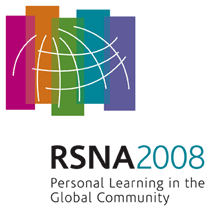
Abstract Archives of the RSNA, 2008
LL-BR2182-H10
Diffusion-weighted Magnetic Resonance Image of the Breast: A Potential Screening Tool for Small Invasive Breast Cancer in Women under 50-year Old
Scientific Posters
Presented on December 2, 2008
Presented as part of LL-BR-H: Breast Imaging
Toshiki Kazama MD, Presenter: Nothing to Disclose
Katsuhiko Kaneoya MD, Abstract Co-Author: Nothing to Disclose
Yumi Uchida MD, Abstract Co-Author: Nothing to Disclose
Minoru Kogure MD, Abstract Co-Author: Nothing to Disclose
Hisao Ito MD, PhD, Abstract Co-Author: Nothing to Disclose
Hideyuki Takano MD, Abstract Co-Author: Nothing to Disclose
Sonomi Oishi MD, Abstract Co-Author: Nothing to Disclose
Takuro Horikoshi MD, Abstract Co-Author: Nothing to Disclose
Tomoko Isobe RT, Abstract Co-Author: Nothing to Disclose
Yoshitada Masuda, Abstract Co-Author: Nothing to Disclose
et al, Abstract Co-Author: Nothing to Disclose
Breast cancer screening under 50-years-old is challenging. The purpose of this study is to compare diffusion-weighted magnetic resonance imaging (DWI) and mammography (MMG) for detection of small invasive breast cancer in women under 50-years-old.
In our institution, all patients with breast cancer undergo magnetic resonance imaging (MRI) of breasts including DWI, and standard mediolateral oblique (MLO) and craniocaudal (CC) views of MMG, if not contraindicated. By review of radiological, medial, and pathological reports, 14 women who were under 50-year old and pathologically proven T1 breast cancer were identified. After IRB approval and informed consent was obtained, 19 women, who were healthy and were under 50-year old, were recruited for this study.
DWI of breasts and standard MLO and CC views of MMG were obtained in breast cancer patients and volunteer women. MRI were obtained with a 1.5-T MR imager and a SENSE body coil. DWI was performed with following parameter; repetition time msec/echo time msec, 3783/64; b factors, 0 and 800 sec/mm2; number of excitation, 6; scan time, 2 and half minutes. DWI were transferred to a workstation and apparent diffusion coefficient (ADC) maps were made. Three radiologists, who had never seen these images, read MMG on films and DWI including ADC maps at a workstation. The name of patients and volunteers were masked. The radiologists individually interpreted these images and sorted the confidence levels for presence of breast cancers in each breast into five grades. Area under the receiver operating characteristic (ROC) curve (Az) was calculated for MMG and DWI. Sensitivity and specificity of both techniques were calculated.
Diagnostic ability was significantly better with DWI (mean area under the ROC curve [Az] = 0.93) than MMG [Az = 0.69] (P<0.05).The mean sensitivity of DWI and MMG were 79% and 38% respectively, and the difference was statistically significant (P<0.01). The specificity of DWI and MMG were 94% and 92% respectively, and the difference was not significant (P=0.37).
DWI might be able to play a role in the detection of small invasive breast cancer in women under 50-years-old.
DWI may be superior to MMG in detection of small invasive breast cancer in women under 50-year old.
Kazama, T,
Kaneoya, K,
Uchida, Y,
Kogure, M,
Ito, H,
Takano, H,
Oishi, S,
Horikoshi, T,
Isobe, T,
Masuda, Y,
et al, ,
Diffusion-weighted Magnetic Resonance Image of the Breast: A Potential Screening Tool for Small Invasive Breast Cancer in Women under 50-year Old . Radiological Society of North America 2008 Scientific Assembly and Annual Meeting, February 18 - February 20, 2008 ,Chicago IL.
http://archive.rsna.org/2008/6009470.html

